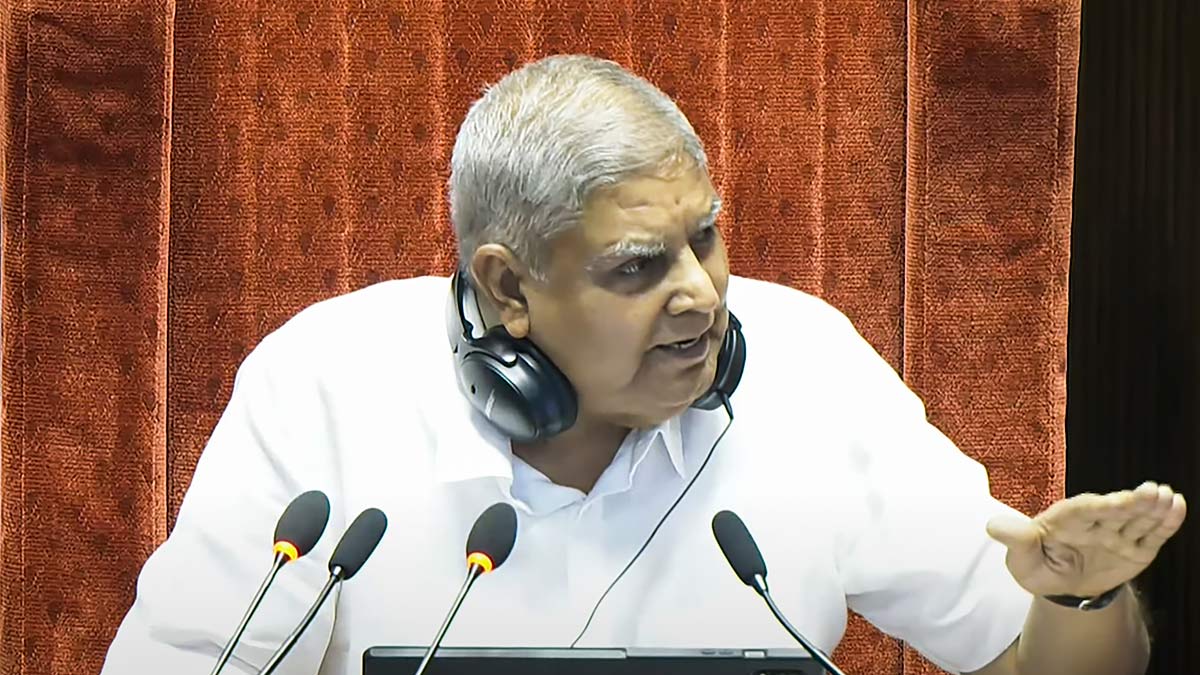Jagdeep Dhankhar's resignation spotlights Jammu & Kashmir's vacant Rajya Sabha seats
 Jagdeep Dhankhar conducts proceedings in the House during the first day of the Monsoon session of Parliament on Monday | PTI
Jagdeep Dhankhar conducts proceedings in the House during the first day of the Monsoon session of Parliament on Monday | PTI
The resignation of Vice President Jagdeep Dhankhar has once again drawn attention to the fact that Jammu and Kashmir currently has no members in the Rajya Sabha.
Although the region’s five Lok Sabha MPs will take part in the upcoming Vice-Presidential election, it will not have full representation. This is because the electoral college for the Vice President’s post includes members from both the Lok Sabha and the Rajya Sabha.
Dhankhar, 74, stepped down on Monday. The Election Commission is expected to issue a formal notification for the Vice Presidential election in the coming days.
Jammu and Kashmir has four seats in the Rajya Sabha, but all have remained vacant since February 2021.
Assembly elections were held nine months ago, but the Election Commission hasn’t initiated the process to fill these seats.
In the new 90-member assembly, the ruling coalition of the National Conference and Congress, supported by some independent MLAs, has over 50 members. This gives it a clear advantage over the BJP, which has 28 members after the death of one MLA. Based on the numbers, the coalition is favourably placed to win three out of the four Rajya Sabha seats.
However, the BJP is unhappy about possibly getting only one seat. The party could have won two seats with the support of five nominated members, who have voting rights in the assembly. But this plan is on hold, as Congress has taken the matter to court. It has challenged the Lieutenant Governor’s authority to nominate the five members.
The Vice President of India also serves as the Chairperson of the Rajya Sabha. This makes Jammu and Kashmir’s absence in the Upper House even more significant in the context of the election.
With the result expected to reflect the current power struggle between the ruling alliance and the opposition, Jammu and Kashmir’s limited role once again highlights the incomplete nature of its political participation at the national level.
India